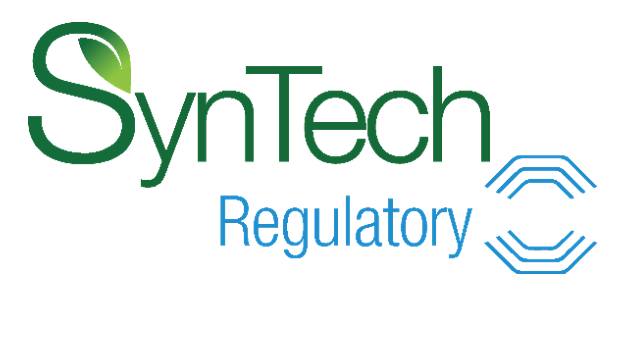Evolving Toward Tolerance
Even as mainstream news reports trumpet potential dangers, genetically modified (GM) crops have been gaining favor worldwide; at the end of 2008, almost 10% of the world’s planted crops were GM crops, according to US Department of Agriculture Foreign Agriculture Service (USDA-FAS) — and that percentage is growing in 2009. Heightened herbicide tolerances, higher prices of crop protection products, increasing world food demand, and a depressed worldwide economy have created an incentive for growers to turn to GM crops.
Countries that have historically resisted importing the crops and banned their growth in-country are now reconsidering them. Africa, the EU, and Asia have loosened restrictions and approved imports and commercialization of their first GM crops, and Europe has become a major consumer of soybean meal for animal feed, of which at least 80% is estimated to be genetically modified.
EU Reduces Pesticides, Grows GM
While Canada, Argentina, and the US have been growing GM crops for years, the EU has long resisted them. However, there are signs that resistance is crumbling: By the end of 2008, the crops approved under EU Directive 2001/18 include glufosinate-ammonium tolerant canola products from Bayer CropScience in lines Ms8, Rf3, and Ms8xRf3; Roundup Ready NK603 corn with glyphosate tolerance, MON 863 for corn rootworm resistance, and MON 863 X MON 810 corn for other pest-resistant corn varieties, as well as GT73, a herbicide-tolerant canola, all from Monsanto; and CRY1F, an herbicide and insect resistant corn from Pioneer/Mycogen seeds. In December, Pioneer’s GM corn 59112xNK603 was also approved for use in food and feed, and Bayer’s A2704-12 soybean also was approved for sale across all 27 EU markets for the next 10 years for food and feed. Every one of these products is available for import, but not for cultivation.
That might be changing. New EU regulations — which were approved by final vote on Jan. 13 — restrict the use of many pesticides considered extremely important to growers — a move considered potentially damaging to EU agriculture by the European Crop Protection Agency (ECPA) and others. Euros Jones, director of regulatory affairs at ECPA, told Farm Chemicals International: “The UK-based consultancy ADAS estimated that European Commission criteria could lead to the loss of 25% of yields in the UK; Parliament criteria could lead to the loss of up to 45% of yields. The impact on yields would likely be very similar in other countries in the EU.”
Jones also warned: “By using only the few remaining pesticides, crops will develop resistance to certain pests and insects that, ironically, will only be feasible to cure by increasing the dosage of the few pesticides left.” With decreased availability of necessary crop protection products and increased crop pest resistance, one solution is for the EU to turn to crop seeds modified to resist the same pests the banned insecticides used to kill.
EU GM crop area has already begun expanding. In the Czech Republic, growers have increased GM corn area from 270 hectares (ha) in 2005 to almost 10,000 ha in 2008. Portugal, Romania, and other European nations significantly increased their biotech acreage in 2008. Even Germany, one of the EU’s most vocal GM opponents, increased GM corn area by almost 700 ha in 2008, as well as planted 36 ha of test fields for GM corn varieties. According to the USDA-FAS EU-27 Biotechnology Annual 2008: “Despite regulatory restrictions and political threat, the area devoted to biotech corn is expected to increase to approximately 110,000 ha in 2009, mainly located in Spain, the Czech Republic, Portugal, Slovakia, and Germany.” Seven EU countries commercially produce GM crops, with Spain the largest producer.
However, EU legislative requirements for GM foods are still the highest in the world, policy varies greatly among member states, and not all of Europe is as welcoming: Poland still seeks to acquire a “GM-free country” status; Italy allows its individual regions to ban GM products; and other member states such as France, Greece, and Hungary maintain national bans on all GM crops. Austria lifted its ban on the import and processing of GM corn varieties, then immediately instituted bans on Ms8, Rf3, and Ms8xRf3 canola lines. Land contracts, as well as threats and intimidation by GM opponents, also contribute to hesitancy by some EU nations — and by individual growers — to adopt GM.
GM Spreads
In July 2008, China approved a US $2.9 billion program to promote the use of GM crops and livestock during the next 13 years. A pest-resistant rice variety is expected to come out of Beijing at any time. GM golden rice — designed to improve nutrition — could be available to growers by 2011.
Other parts of Asia are moving toward GM crops as well: South Korea — of which 70% of the country’s soybean imports are genetically modified — began to import GM corn in May 2008 after China began to reduce its exports. Vietnam, in an effort to reduce its dependence on imported foods, is building a program to develop commercial GM crops. Likewise, one point of the Philippines Department of Agriculture’s four-point program for 2009 corn production includes exploring the use of GM corn. India has greatly benefitted from Bt (Bacillus thuringiensis) cotton and has vastly increased its percentage of cotton acreage planted to Bt cotton for 2009.
In Africa, where governments have turned away aid shipments containing GM food even as hunger crises have reached extraordinary highs, Ethiopian growers received 80 disease resistant and high-yielding GM crop, vegetable, and fruit varieties from Ethiopia’s Amhara State Agriculture Research Institute. Institute Crop Protection Research Director Wondimu Bayu said efforts are being made to popularize newly released crop varieties that are expected to considerably benefit farmers. Meanwhile, scientists in Uganda announced in November 2008 that they would soon begin GM cotton trials, while South Africa has approved GM sorghum trials. Burkina Faso in French-speaking West Africa has commercialized biotech Bt cotton, planting 14,973 ha in 2008 for seed production that could result in 161,874 ha planted in 2009.
Western Australia will begin trials of Monsanto’s GM Roundup Ready canola on 1,000 ha this year. While there’s still plenty of opposition to GM crops in the country, proponents say successful development of the GM crop would allow it to be planted in areas of low rainfall throughout the state.
Future Tech
Last year saw an abundance of new GM crops, mostly in soybeans, corn, and cotton. A few new sugarcane varieties also came to market, with Monsanto acquiring two Brazilian sugarcane breeding and technology companies, CanaVialis S.A. and Alellyx S.A., in November 2008. Monsanto plans to bring trait technologies to the market some time around 2016, according to Carl Casale, executive vice president of global strategy and operations for the company. The company previously acquired Brazilian corn seed company Agroeste in 2007, giving all appearances that Monsanto sees GM crops as a large part of agriculture’s future. Other major players are focusing on bringing new traits and varieties to market this year: Dow Chemical’s Mycogen Seeds division 2009 lineup includes 27 new corn varieties. Bayer CropScience’s glyphosate-tolerant LibertyLink soybeans will be released in the US in 2009, and DuPont’s Pioneer Hi-Bred anticipates first sales of its Optimum GAT glyphosate and ALS (acetolactate synthase) herbicide-resistant technology within the next year or two.
Half of the 23 countries worldwide currently growing GM crops are lesser-developed nations. With cost often a major factor in these areas — and the global economy looking to be slow again this year — biotech seed can save farmers a lot of money. Chinese rice growers proved it in 2008, when GM rice producers used 80% fewer pesticides than those growing conventional rice crops. More than half of the GM rice growers used no pesticides at all. Bt cotton in India bolstered yields by up to 50%, studies show, while insecticide use fell 50% or more. At the same time, growers income increased by up to US $250 or more per hectare, increasing national farmer income from $840 million to $1.7 billion last year.
The move to GM seeds doesn’t appear to bode well for the pesticide industry. However, in the big scheme of things, it doesn’t seem that new insects and exotic plant diseases will be stopping their incessant march across the world’s crops any time soon. And as new herbicides become available, plants continue to develop resistance to them. For the near future, at least, GM crops will coexist with conventional farming practices — including the beneficent use of crop protection products.





